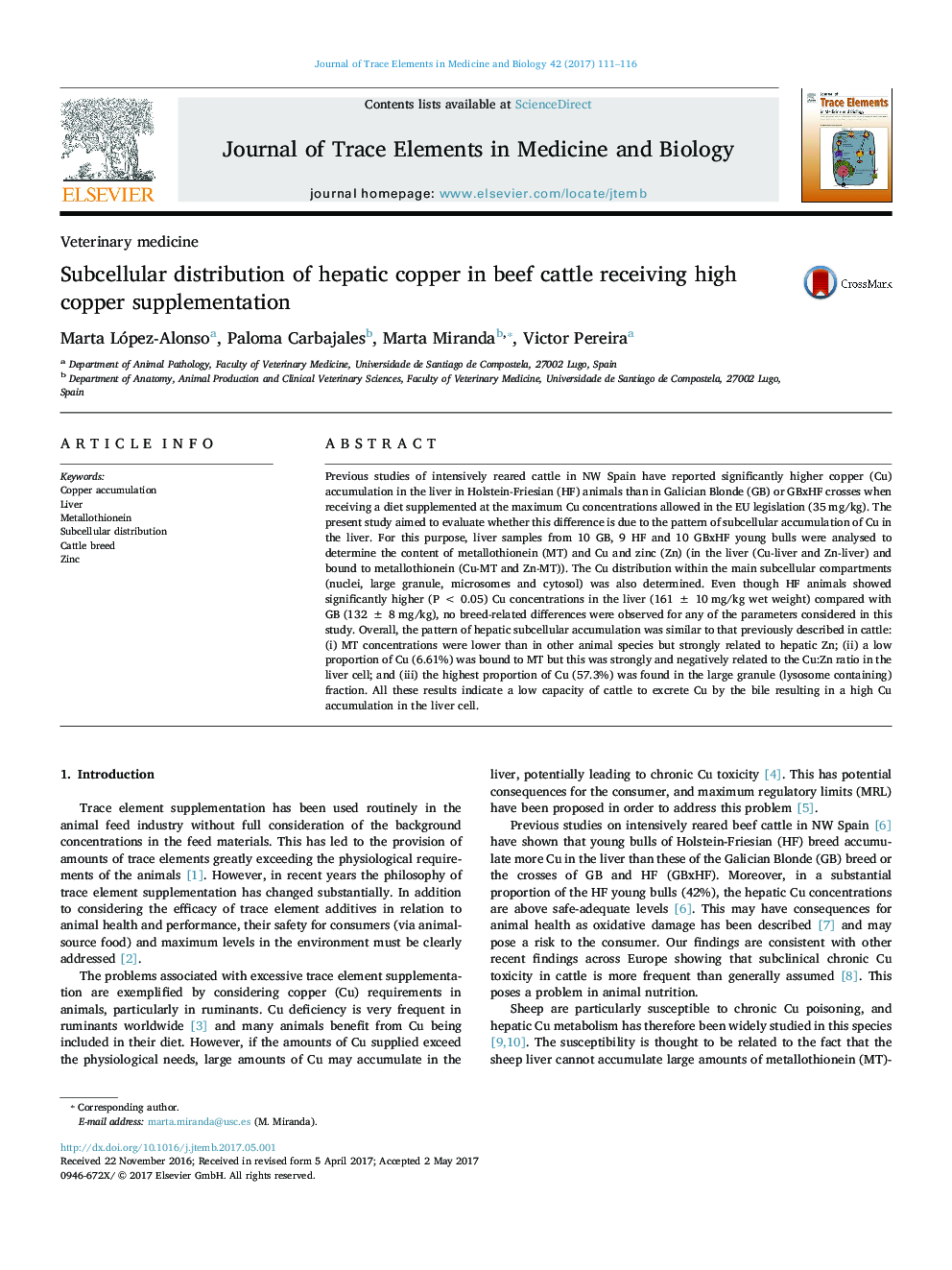| Article ID | Journal | Published Year | Pages | File Type |
|---|---|---|---|---|
| 5138900 | Journal of Trace Elements in Medicine and Biology | 2017 | 6 Pages |
Abstract
Previous studies of intensively reared cattle in NW Spain have reported significantly higher copper (Cu) accumulation in the liver in Holstein-Friesian (HF) animals than in Galician Blonde (GB) or GBxHF crosses when receiving a diet supplemented at the maximum Cu concentrations allowed in the EU legislation (35 mg/kg). The present study aimed to evaluate whether this difference is due to the pattern of subcellular accumulation of Cu in the liver. For this purpose, liver samples from 10 GB, 9 HF and 10 GBxHF young bulls were analysed to determine the content of metallothionein (MT) and Cu and zinc (Zn) (in the liver (Cu-liver and Zn-liver) and bound to metallothionein (Cu-MT and Zn-MT)). The Cu distribution within the main subcellular compartments (nuclei, large granule, microsomes and cytosol) was also determined. Even though HF animals showed significantly higher (P < 0.05) Cu concentrations in the liver (161 ± 10 mg/kg wet weight) compared with GB (132 ± 8 mg/kg), no breed-related differences were observed for any of the parameters considered in this study. Overall, the pattern of hepatic subcellular accumulation was similar to that previously described in cattle: (i) MT concentrations were lower than in other animal species but strongly related to hepatic Zn; (ii) a low proportion of Cu (6.61%) was bound to MT but this was strongly and negatively related to the Cu:Zn ratio in the liver cell; and (iii) the highest proportion of Cu (57.3%) was found in the large granule (lysosome containing) fraction. All these results indicate a low capacity of cattle to excrete Cu by the bile resulting in a high Cu accumulation in the liver cell.
Related Topics
Physical Sciences and Engineering
Chemistry
Analytical Chemistry
Authors
Marta López-Alonso, Paloma Carbajales, Marta Miranda, Victor Pereira,
